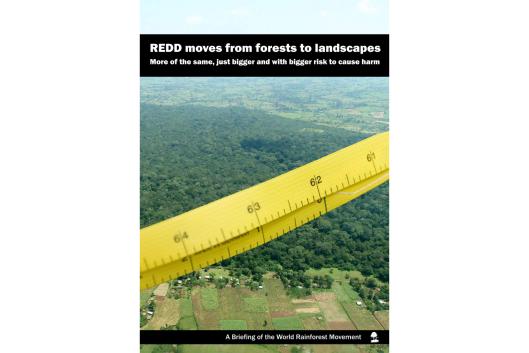Published in September 2014 (previously as an article of the monthly electronic bulletin of WRM of July 2014)
In the late 1980s, the FAO and the World Bank launched their first large programme to halt forest loss. It was called Tropical Forestry Action Plan (TFAP). A report for WRM in 1990 showed that "the Tropical Forestry Action Plan is fatally flawed. Far from curbing forest loss, the Plan will accelerate deforestation." Little change to the analysis from some 24 years back would be required to make it applicable to REDD, REDD+, and probably soon, landscape REDD. The landscape REDD approach attempts to include both forests and agriculture, and remains as top‐down and condescending towards forest‐dependent communities and collaborative with the corporate associations of the agriculture and logging sectors as the FAO and World Bank's failed Tropical Forestry Action Plan of the 1980s. Deforestation and the emissions from it will continue, and in the process landscape REDD will cause a lot of harm by vilifying forest‐dependent communities and those who produce the majority of the world's food – small scale farmers. But it need not be that way if instead government action focused on leaving fossil fuels in the ground and phasing out industrial agriculture – the cause of the large majority of emissions in the land use sector. REDD is the smokescreen to hide inaction on these pressing challenges.
